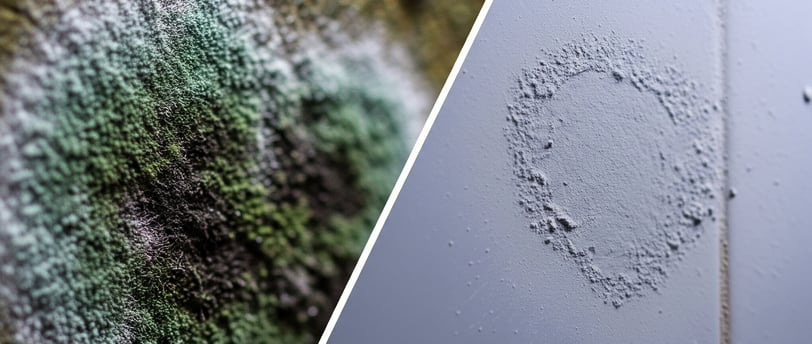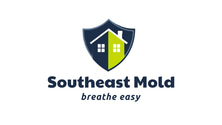Mold vs. Mildew: Unmasking the Differences in Your Home
Mold vs. Mildew: Unmasking the Differences in Your Home When you spot an unwelcome fuzzy or discolored patch in your bathroom or basement, your first thought might be, "Is that mold or mildew?"
Southeast Mold
5/19/2025


Mold vs. Mildew: Unmasking the Differences in Your Home
When you spot an unwelcome fuzzy or discolored patch in your bathroom or basement, your first thought might be, "Is that mold or mildew?" It's a common question, and for good reason – these two fungal growths are often confused. While both are fungi that thrive in damp environments and can impact your home and health, they have distinct characteristics and implications.
Understanding the differences between mold and mildew is crucial for effective prevention and removal. Let's break them down.
What is Mildew? (The Surface Scourge)
Mildew is often the milder (pun intended!) of the two, typically appearing as a flat, powdery, or downy growth on surfaces.
Appearance: Usually white, gray, or yellowish in color. It can sometimes turn a brownish shade as it ages.
Texture: Flat, powdery, and sometimes flaky or downy. It doesn't usually penetrate beneath the surface.
Common Locations: You'll most often find mildew in humid areas like:
Shower curtains and tiles
Bathroom walls and ceilings
Window sills
Outdoor furniture cushions
Damp clothes or paper
Smell: Often has a damp, musty odor, but usually less intense than mold.
Health Impact: Primarily associated with allergic reactions (sneezing, coughing, itchy eyes) for sensitive individuals. Generally, its health effects are less severe than mold.
Cleaning: Because it's a surface-level growth, mildew is generally easier to clean with household cleaners, a scrub brush, and proper ventilation.
What is Mold? (The Deep-Rooted Problem)
Mold is a more serious concern, as it can grow much deeper into porous materials and cause more significant damage and health issues.
Appearance: Can come in a wide array of colors including black, green, red, blue, orange, brown, or purple.
Texture: Often appears fuzzy, slimy, velvety, or even leathery. It often looks raised or three-dimensional.
Common Locations: Mold can grow almost anywhere there's moisture and a food source. This includes:
Behind walls and wallpaper
Under flooring and carpets
Inside drywall and insulation
Basements and crawl spaces
Attics
Around leaky pipes or roofs
Any area with persistent dampness or water damage
Smell: Typically produces a strong, pungent, very earthy, and musty odor, even if you can't see the mold itself.
Health Impact: Can lead to more severe health problems, including persistent respiratory issues, chronic coughing, skin irritation, headaches, and for sensitive individuals or those with compromised immune systems, more serious infections. Certain types of mold can produce mycotoxins, which are toxic compounds.
Cleaning: Mold roots deeply into surfaces, making it much harder to clean effectively without professional intervention, especially on porous materials. Attempts to remove it without proper containment can spread spores and worsen the problem.
Preventing Both Mold and Mildew
The good news is that the best defenses against both mold and mildew are largely the same: moisture control.
Manage Humidity: Keep indoor humidity levels between 30% and 50% using dehumidifiers and air conditioning.
Ensure Good Ventilation: Use exhaust fans in bathrooms and kitchens, and open windows when practical.
Fix Leaks Immediately: Don't let dripping pipes or leaky roofs go unaddressed.
Dry Wet Areas Promptly: After any water event, dry affected areas within 24-48 hours.
Clean Regularly: A clean home is less likely to harbor mold and mildew spores.
When to Call the Professionals
While you might be able to tackle small mildew spots with a good scrub, any significant or recurring mold growth warrants professional attention. Mold can hide behind walls, under flooring, and in your HVAC system, posing unseen health risks and potentially compromising your home's structure.
If you're unsure whether you're dealing with mold or mildew, or if the growth is extensive, it's always best to consult with a mold remediation specialist. They can accurately identify the issue, safely remove the growth, and address the underlying moisture problem to prevent its return.
Call us today: 770-744-3383 or email us at info@southeastmold.com
